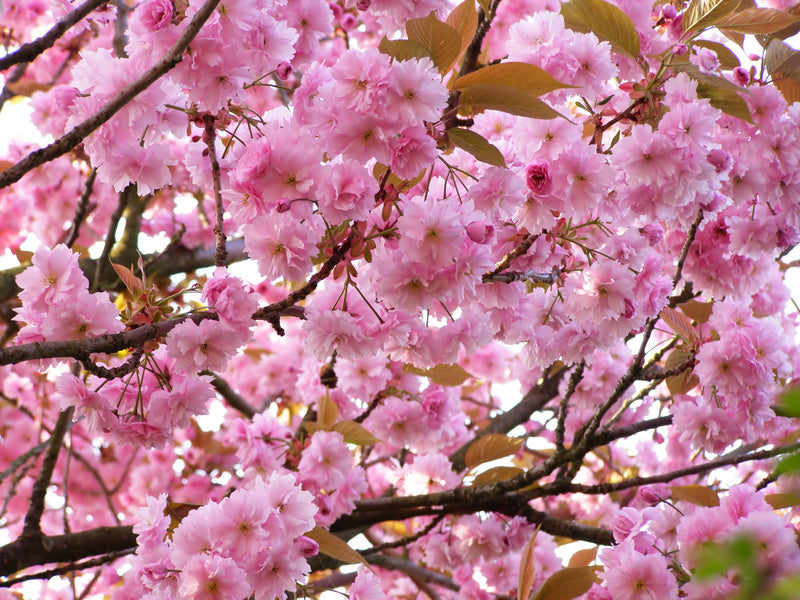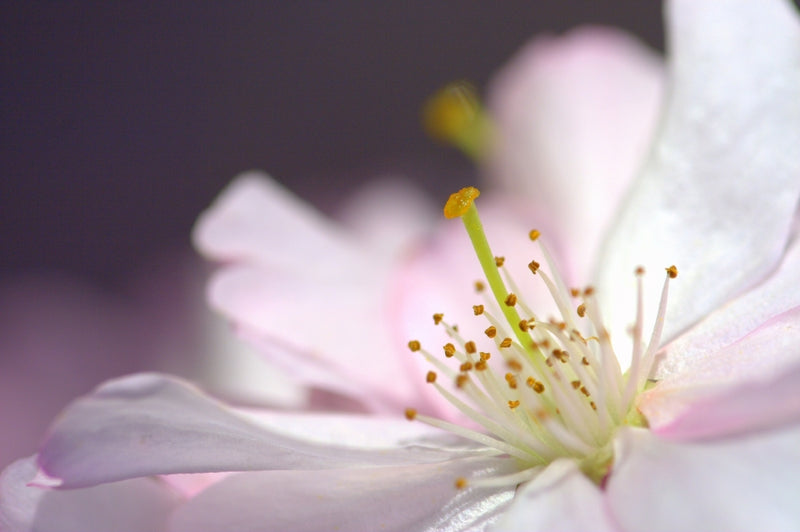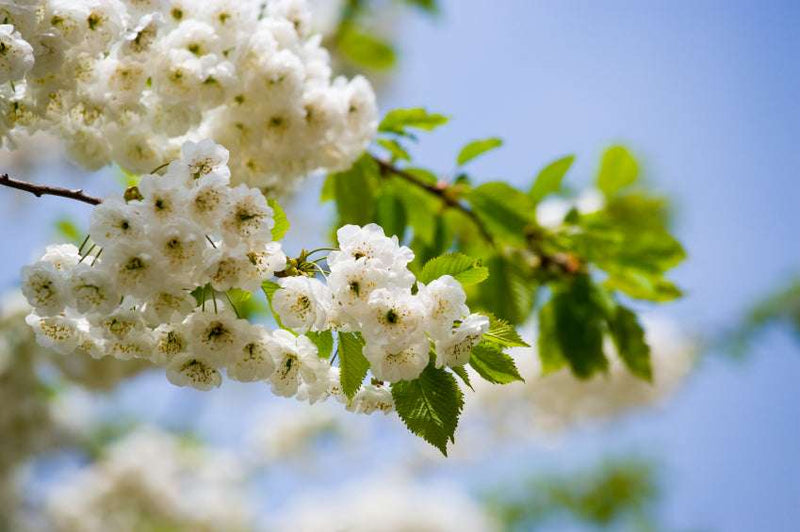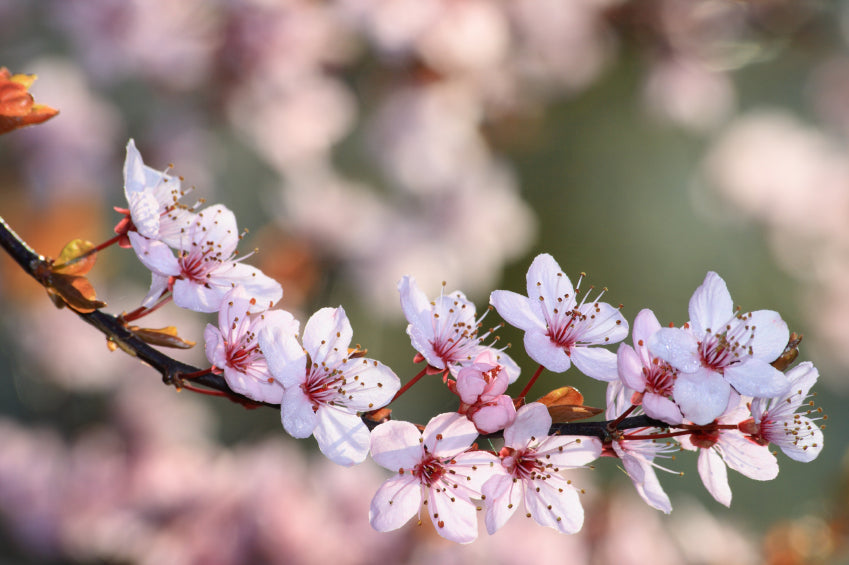Ornamental cherries
In their native Japan, the cherry blossoms are celebrated every year with a large festival, "Hanami." And rightly so, as they are among the first plants to bloom in spring, transforming the lawn into a white or pink carpet of blossoms.




A flower with tradition
The sakura (Japanese for cherry blossom) is a traditional symbol in Japan. Not only is it the official flower of Tokyo, but its blossoming from March onwards brings beauty and warmth back to the country, symbolizing beauty, new beginnings, and transience. This perfection, from bud to withering, brings crowds of Japanese people together in spring to celebrate the traditional "Hanami" – the Cherry Blossom Festival. "Hanami" actually means "to look at the blossoms" and is an ancient tradition in Japan. Depending on the region, the Japanese cherry blossom blooms from late March to early May.
A country sees pink
During the approximately 10 days when the cherries are in bloom, almost all Japanese residents celebrate the unique blossom display with friends, family, and colleagues at a sake party under the trees. As soon as the cherry blossoms announce themselves, the country is thrown into a state of emergency. Television and newspapers repeatedly report on the cherry blossoms and their current location. Everyone wants to be there and experience the breathtaking spectacle of the delicate blossoms. Even the otherwise rather gray Tokyo glows in light pink. Some even travel from the south of the archipelago, where it begins, to the north to enjoy the magical spectacle for as long as possible. The ornamental cherries, which originate from Japan and, like our native sweet cherry, belong to the genus 'Prunus', also have numerous fans in Germany. No wonder, since they are one of the first woody plants to impress in spring with their abundant blossoms, transforming the lawn below into a pink and white carpet.
Eye-catcher in every garden
There are numerous species and varieties of various sizes, from smaller shrubs to imposing trees, which differ in flower color and shape, growth rate, and flowering time. Some bloom as early as late March, others not until late May. This makes it easy to select a suitable variety for every garden. If you want to enrich your property with one of these noble woody plants, you should therefore consider not only what you like, but also what suits your garden. Whether you prefer white or pink flowers is a matter of taste, as is the decision between double or single flowers. Another important criterion when selecting is the growth characteristics of the deciduous trees. The vigorous variety 'Kanzan', also known as the carnation cherry, is the most common in our country. This dark-pink flowering variety is very frost-hardy and delights us with its splendor for about three weeks. It is often grafted as a standard tree and can thus grow up to 10 meters into the sky. To fully display its beauty, it should be allowed a spread of approximately seven meters. It performs well as a solitary flowering shrub in large gardens. However, it is completely unsuitable for a small front yard. The delicate 'Brilliant' (only grows to 2 meters tall and a maximum of 1.5 meters wide) or the columnar 'Amanogawa' would be the right choice. It blooms a pale pink and grows to only about one meter wide. This makes it ideal for enchanting even small gardens with its numerous, semi-double blooms.
Flower frenzy
Also consider the flowering time: Are you longing for blossoms in early spring, or can you wait until May? The 'Autumnalis' is something special. Although its main flowering period is in March and April, in mild weather, the white blossoms can appear as early as November. From the beginning of April (or even the end of March, depending on the climate), the 'Accolade' blooms with beautiful, semi-double pink flowers. Because it blooms before the leaves appear, it is also called the spring cherry. In April and May, 'Pink Perfection' follows with deep pink blossoms, followed by the snow-white 'Tai Haku', whose leaves glow a beautiful yellow-orange in autumn. The red autumn color of 'Prunus sargentii', the scarlet cherry, blooms in April, is equally magnificent. The 'Shirotae' variety blooms in early May. It has single, white flowers when young, while slightly older specimens bear semi-double blossoms. At the end of the flowering season, in the last weeks of May, are the varieties 'Pendula' with a hanging growth and the double, white and pink flowering 'Shirofugen'.
The right care
Despite their incredible beauty, ornamental cherries are anything but spoiled divas. They aren't too demanding when it comes to soil. They prefer humus-rich to slightly loamy, deep garden soils without waterlogging. In wet soils, the trees are susceptible to wood diseases (gum blight, tip blight). Excessive dryness is just as damaging to the tree as too much moisture. Therefore, in hot, dry summers, you should occasionally water the tree with a hose. This is especially important in the year of planting to ensure the tree's good growth. Lime promotes growth and flowering. Ornamental cherries prefer a location in full sun, but can also tolerate partial shade. They thrive best in sunlight and also produce the most flowers.
Maintain growth form
The different varieties have their own specific growth habit. Most, such as the 'Kanzan,' grow in an upright funnel shape, others, such as the 'Amanogawa,' in a columnar form, or in a weeping form, as in the 'Pendula' or the 'Kiku-shidare-zakura.' To preserve the characteristic growth habit, pruning should be kept to a minimum, and only branches and twigs that are too close together or that are growing too tall or wide should be removed. Pruning should take place in the summer months; this is the most gentle way to remove new shoots. Major changes to the tree structure should be made in October or early spring. Young ornamental cherries are best not to be pruned at all. The first thinning should take place approximately three to four years after planting. Be sure to use sharp tools for pruning. Blunt tools do not leave clean edges, and the resulting wounds on the ornamental cherry tree heal more slowly.




































































































